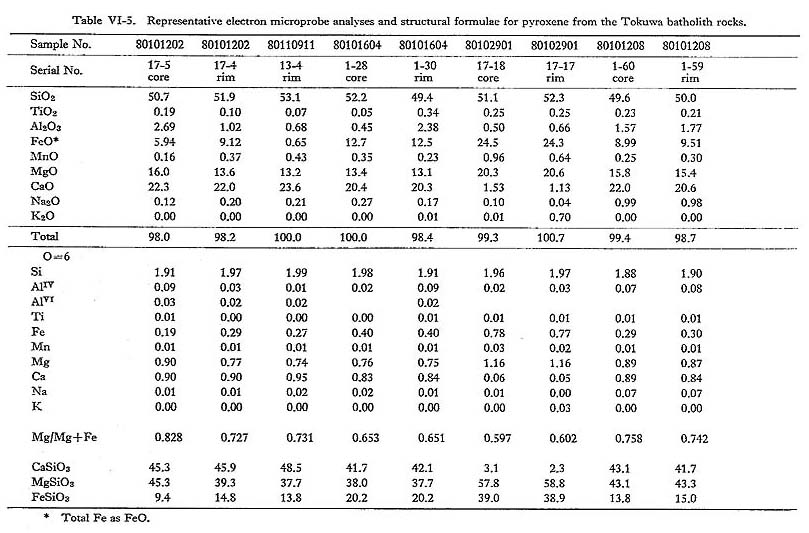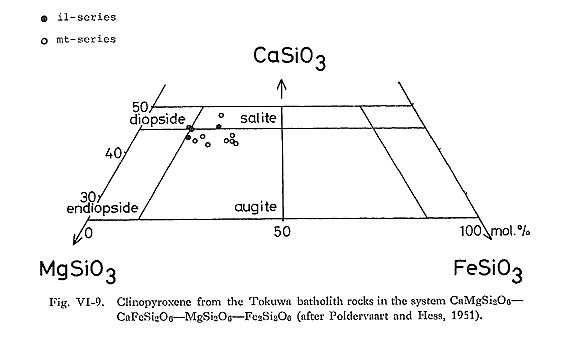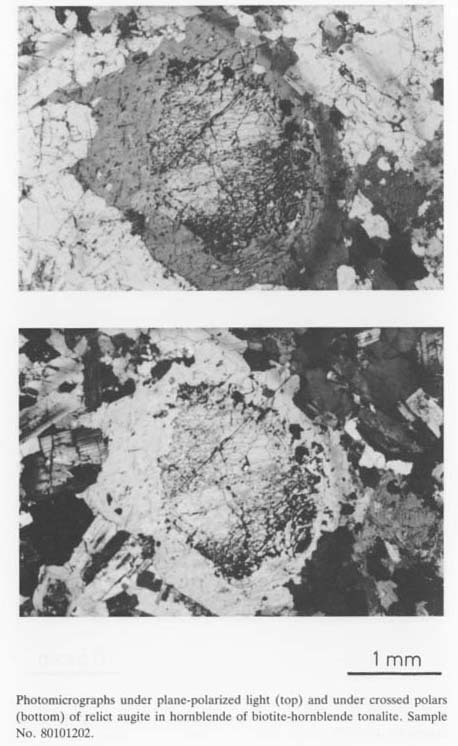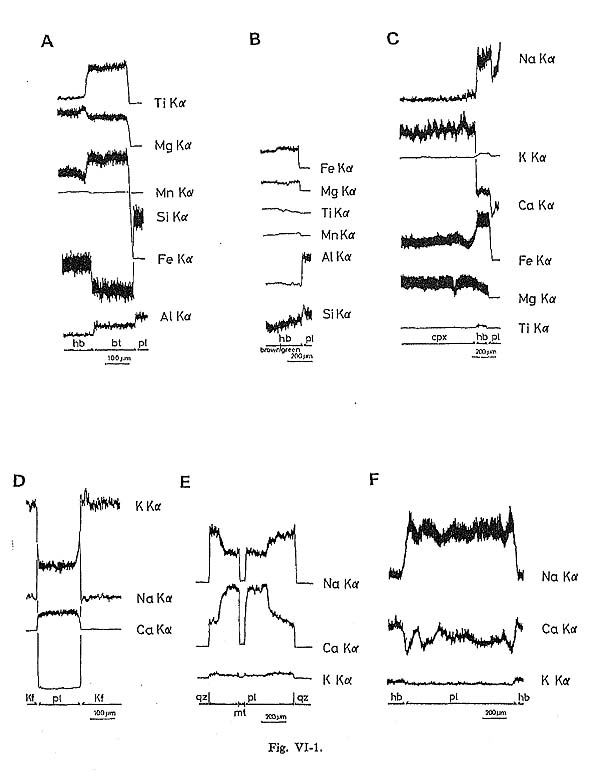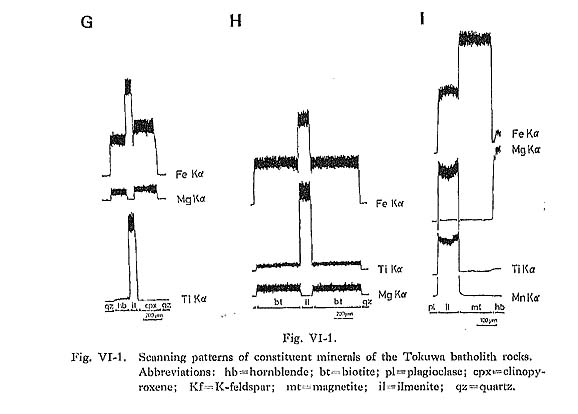CHAPTER VI
Mineralogy of the Tokuwa Batholith Rocks
3) Pyroxene
|
In relatively basic rocks of the Tokuwa batholith clinopyroxene occurs only as relict masses of up to 2 mm (Plates 7 and 8) enclosed within hornblende crystals, probably indicating that it reacted with magma at the beginning of hornblende crystallization. No unmantled clinopyroxene crystals have been found in the rocks. There is also a good possibility that pyroxene might be a xenocryst. Nine representative pyroxene compositions are shown in Table VI-5. Most of the pyroxene is observed in magnetite-series rocks and is identified as clinopyroxene (augite and a smaller amount of salite) (Fig. VI-9). Orthopyroxene (hypersthene) is rarely observed in some of magnetite-series rocks.
Weakly zonal pyroxene is found (Figs. VI-1-C and -G). SiO2, Al2O3, and FeO* are commonly abundant in the rim, whereas the core is rich in TiO2, MgO, CaO, and Na2O. Pyroxene does not include magnetite and ilmenite. These oxide minerals occasionally exist at the boundary between pyroxene and hornblende or are commonly included in hornblende and biotite.
In pyroxene in magnetite-series rocks, the mg values of orthopyroxene (0.60±) are lower than those of clinopyroxene (0.65 to 0.79). The mg values of clinopyroxene in magnetiteseries rocks arc lower than those of clinopyroxene in ilmenite-series rocks (0.73 to 0.83). |
